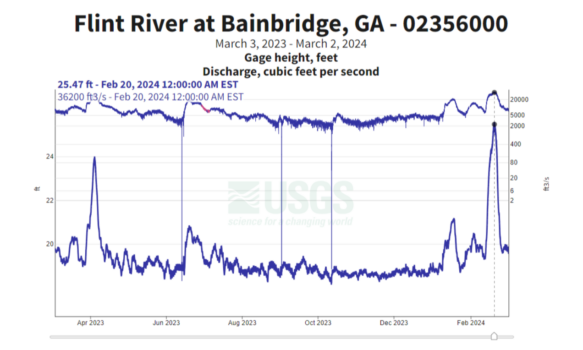A Steward of Lake Seminole
Published 9:52 am Thursday, March 7, 2024
|
Getting your Trinity Audio player ready...
|
It has been said that there are three types of people: the informed, the mis-informed and the uninformed. Social media and “fake news” has contributed greatly to the mis-informed category because everyone has an opinion that is not necessarily based on fact. As an engineer and businessman, I rely more on data and facts than opinions. Determining those facts often requires research. I will endeavor to share the data and facts in this column, as we research them, so that we can all be better informed about our precious resource-Lake Seminole.
The Stewards of Lake Seminole are focused on managing invasive species for the benefit of all the stakeholders. We have always said that we would leave the Flint River and Chattahoochee River systems to Mother Nature and focus on improving access for all recreational users in the backwaters and low flow areas. Well, Mother Nature has been working overtime in the past few weeks and may very well set the stage for a flow of misinformation later this year.
The chart above reflects two significant peaks. The first in April of 2023 where high water flow rates h resulted in the removal of some invasive species, and periods of high turbidity which stopped the photosynthesis of the deeper hydrilla. The result was fisherman saw less grass on the river systems this year. The second peak is significantly higher and reflects hydrological conditions on, and around, February 20th of this year on the Flint River at Bainbridge. Water flow velocity was as high as 2.95 feet/sec and can be compared to a mean velocity on the Flint River of 0.24 feet/sec. This is over a 1200% increase in normal velocity. Flint River flow rates up to 36,200 cubic feet/sec approached the seventy-one (71) year record of 36,600 cubic feet/sec set in 2013 and were more than 280% higher than normal. The total flow through the Jim Woodruff dam, which is all inclusive, was more than double the high flows experienced in April. Consistent with the high flows, water turbidity is very high (muddy) and will significantly impact photosynthesis. The net result is there will be a significant impact to the level and growth of submersible aquatics in 2024 on Lake Seminole in these high flow areas. Additionally, it may be possible that some channelization occurs, and redepositing of floating debris, so be observant and aware that new hazards will emerge.
Unfortunately, the low flow areas of the lake will not receive this help from Mother Nature. The picture below shows invasive vegetation being washed down the Flint River. The floating vegetation is predominantly Cuban bulrush and water hyacinths. What you can’t see in the photo are the submersibles that are being scoured off the lake bottom. Much of the floating invasives will be redeposited in low flow areas. The Stewards of Lake Seminole and the Corps of Engineers will endeavor to remove this material as funding allows.
The Stewards held three open meetings this past week with total attendance exceeding 100. Sponsorship levels now exceed 270, with a high percentage of renewals, as we work to secure funding to support our 2024 plans. When you join the Stewards, you are not just helping yourself, but helping the community. Join us at http://www.stewardsoflakeseminole.com
If we don’t save it….Who will?






